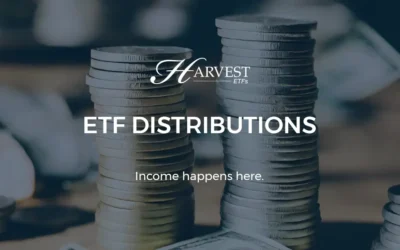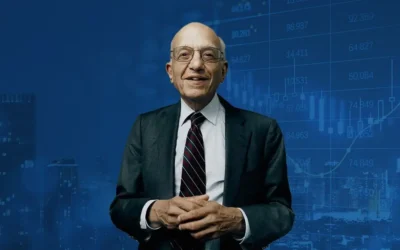Real estate investments trusts (REITs) are popular with income seeking investors because of the dividends generated by their underlying assets. In a Goldilocks parable, they are not quite stocks and not quite bonds, but offer just the right features of each.
When dividends and share growth are combined, REITs provide a greater return than most bonds and with less risk than many stocks.
As interest rates have eased, with signals of more cuts to come, REITs have become more attractive relative to stocks. The Bank of Canada resisted pressure earlier this month to cut its key rate from 1.75%, but it may not hold out for much longer. Two weeks later, the U.S. Federal Reserve reduced its benchmark overnight lending rate to a target range of 1.75% to 2%. The cuts make REIT dividends that much more attractive and gave a boost to the sector.
REITs were also in the news this month with a big takeover. The private equity firm Blackstone Group Inc. paid $3.3 billion for Dream Global REIT (TSX: DRG.UN). Dream Global has been publicly traded since 2011 and, though a Canadian REIT, focuses on properties in Germany and the Netherlands.
Canadians tend to think of REITs in terms of office buildings and shopping centres and also tend to think local. But the impact of technological change – a force shaping every aspect of the economic landscape – is being felt here too and on a global level. So, looking outside the traditional offerings may provide investment opportunities.
One area where REITs are now a force is in storage facilities that house data for banks and insurance companies. Their customers are tech leaders such as IBM, Microsoft, AT&T, and major banks and insurance companies. These warehouses are places where they keep the servers that store information for cloud computing and data analysis.
A second area is the healthcare sector, in a way that blends technology with biotechnology research, biopharma, and drug development. These facilities store temperature-sensitive medicines and provide the labs and equipment for the research.
A third area is related to the growth of online shopping. REITs own the warehouses that store the goods to be shipped to a global marketplace. The Canada Pension Plan Investment Board (CPPIB), which invests on behalf of the CPP, is one of the largest owners of warehouse facilities in China.
The underlying philosophy remains the same: The assets of a REIT are buildings and equipment and they offer a defensive, diversified holding. Their prices move in different ways to stocks and their lease-based revenue stream is typically less volatile than the broader economy and also offers inflation protection.
They offer small investors a way to own real estate in an easier, more liquid, and more diversified way than directly purchasing an income property. To cash out, you simply sell your shares. The sector has done well this year. So far in 2019, the S&P/TSX Capped REIT Index is up 19.3%.
The case for going global is the same one that favours investment diversification. Canada’s REITs make up about 3% of the global total. So, there’s lots of opportunity elsewhere.
Here are two Canadian REIT ETFs that take an international approach beyond the U.S.
Harvest Portfolios Global REIT Leaders Income ETF (TSX: HGR) Closed Friday at $10.27.
Background: This fund was launched in 2017 and invests in an actively managed portfolio of between and 20 and 30 developed market real estate issuers.
Performance: This ETF has moved up steadily this year and is currently trading near its all-time high. Average annual return since inception in June 2017 is 6.84%.
Portfolio: Harvest has 57% of its assets in the U.S. Another 38% are in Europe, with France and Germany as the biggest components. Canadian holdings are 3%.
A total of 27% of the holdings are industrial or residential REITs, with 16% in the healthcare sector, 11% in office, 10% in real estate, 7% in retail and the rest in miscellaneous.
Key metrics: The fund is quite small, with $4.9 million in assets. The average dividend yield was 2.92%, a current monthly distribution yield of 5.40% for the ETF (yield enhanced through a covered call overlay) as of Sept. 30, 2019 and a 5-year return on equity of 18.34%”
The management fee is 0.85%.
RBC Quant Global Real Estate Leaders ETF (TSX: RGRE) Closed Friday at $18.93.
Background: RBC Global Asset Management launched a similar product to Harvest in May 2017, a month earlier. It is also similar in size with $5.6 million in assets.
Performance: The average annual return since inception is 1.4%. The fund was down 1.9% in 2018 but is up 8.47% year-to-date.
Portfolio: The fund has fewer European holdings than Harvest and a large emerging markets component. It has not performed as well as Harvest. In geographic terms, its holdings are U.S. (44%), international excluding emerging markets (29%), emerging markets (18%), and Canada (8%). For broad international exposure, Harvest is the better choice.
Retail REITS make up 42% of the portfolio, diversified real estate is 17%, hotels and resorts are 12%, and healthcare is 11%.
Key metrics: RBC Quant Global has a higher dividend yield of 4.95% and a lower management fee of 0.55%.
(This article appeared in the Sept. 30, 2019 edition of the Internet Wealth Builder investment advisory.)








